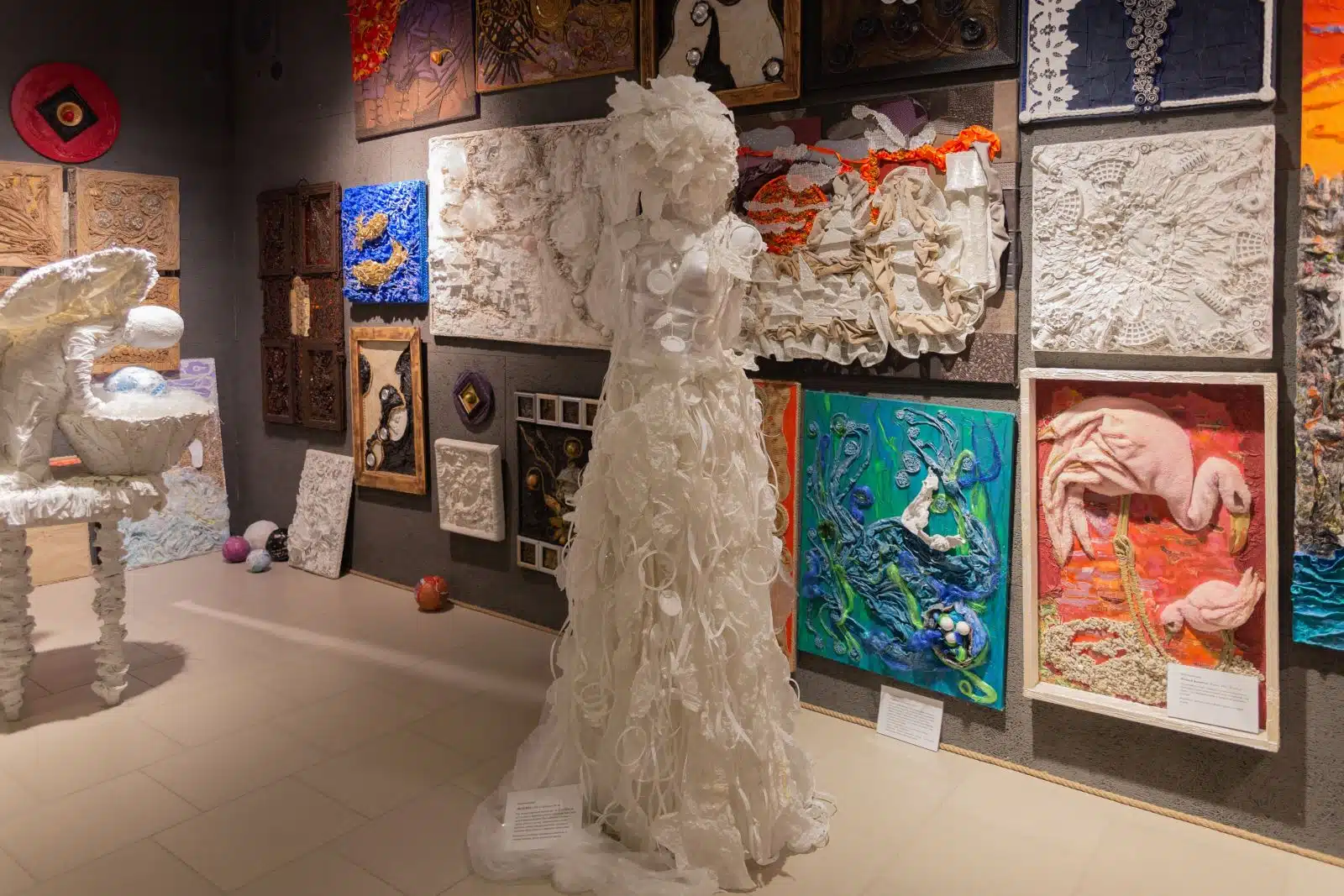In an era where sustainability is paramount, a new wave of artists is emerging, turning recycled materials into compelling art. These eco-artists are creating visually stunning pieces and making powerful statements about consumption, waste, and environmental responsibility. This guide introduces you to the top 10 artists in this movement, each transforming recycled materials into thought-provoking art.
1. El Anatsui

Image Credit: Shutterstock / David Burrows
El Anatsui, a Ghanaian sculptor, has redefined the use of recycled materials in art. His signature tapestries, woven from thousands of discarded bottle caps and aluminum wrappers, are visually stunning and carry a profound commentary on consumerism, waste, and the passage of time. Anatsui’s works are large-scale, often draping over and transforming the facades of buildings, challenging traditional notions of sculpture and painting. His art deeply connects to his African heritage while addressing global issues. The intricate nature of his work, where each piece of metal is carefully flattened, shaped, and connected, speaks to the labor-intensive process behind these magnificent creations. Anatsui’s art is a testament to the transformative power of recycling, turning what is considered waste into objects of beauty and contemplation.
Insider’s Tip
Anatsui’s works are exhibited in major museums worldwide, including the British Museum in London and the Metropolitan Museum of Art in New York.
Website
https://elanatsui.art/
2. Vik Muniz
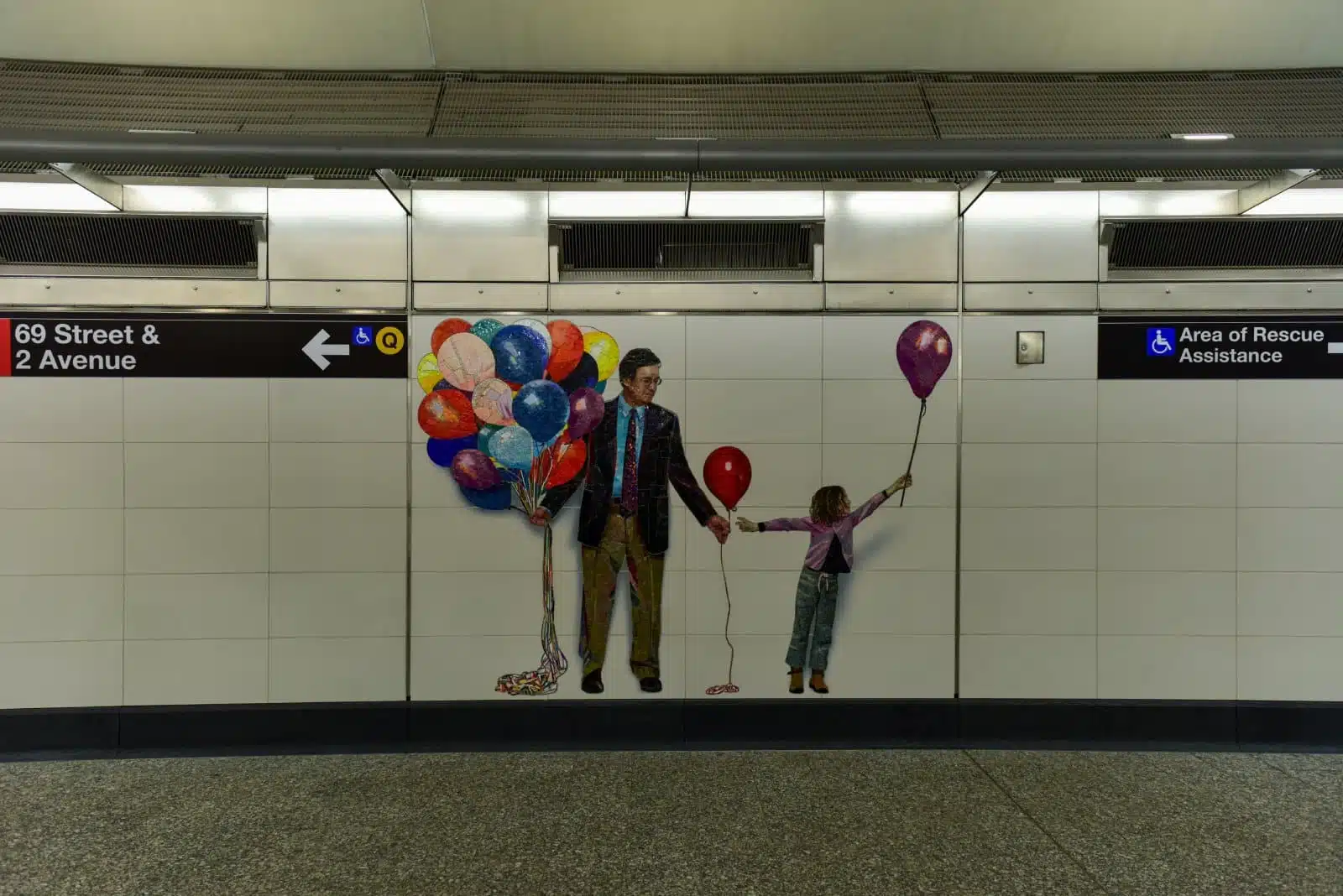
Image Credit: Shutterstock / Felix Lipov
Vik Muniz, a Brazilian artist, stands out for his ability to recreate famous artworks using unconventional materials, most notably garbage. His series “Pictures of Garbage,” where he used refuse from Rio de Janeiro’s largest landfill, Jardim Gramacho, to reconstruct classical portraits, is a poignant exploration of the human condition and the environment. Muniz’s work is a powerful statement on the lives of the marginalized, the transient nature of material possessions, and the impact of waste on our planet. His process involves working closely with the catadores or garbage pickers, highlighting their stories and bringing a human element to the waste they collect. Muniz’s art blurs the lines between the beautiful and the discarded, challenging viewers to reconsider their perceptions of art and trash.
Insider’s Tip
Muniz’s work is often displayed in galleries and museums globally, such as the Museum of Modern Art in New York.
Website
3. Michelle Reader
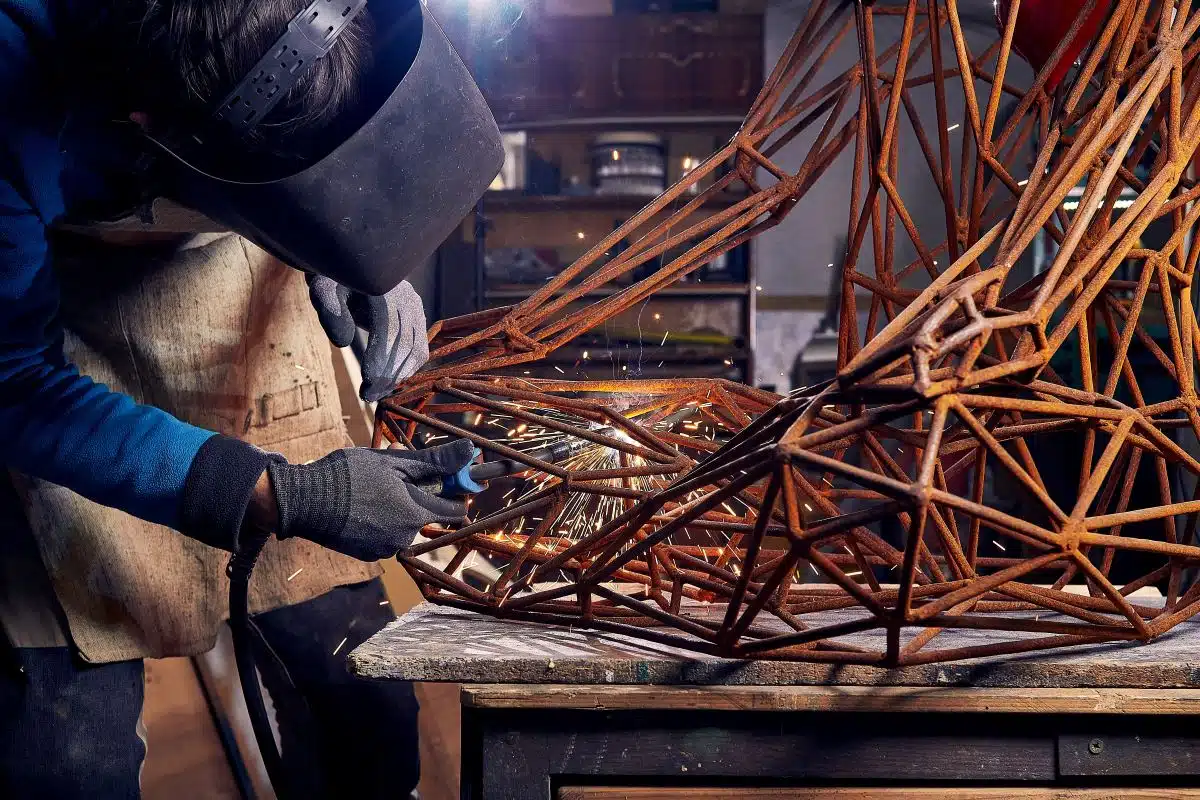
Image credit: Shutterstock / watcher fox
Michelle Reader specializes in creating unique sculptures using recycled materials and found objects. Her approach is distinctive in that she constructs figures and scenes that narrate the story of their material origins and the people who discarded them. Reader’s works are often commissioned and specific to their recipients, incorporating items from their own waste to create a personal and meaningful piece. Her sculptures range from whimsical and playful to thought-provoking, each with a clear environmental message. Reader’s ability to breathe life into discarded items challenges viewers to consider the lifecycle of the products they consume and the potential for reuse in what is often too quickly labeled as waste.
Insider’s Tip
Reader’s works are primarily commissioned; however, her exhibitions in the UK, such as at the Royal Festival Hall in London, are open to the public.
Website
https://www.michelle-reader.co.uk/
4. Wim Delvoye
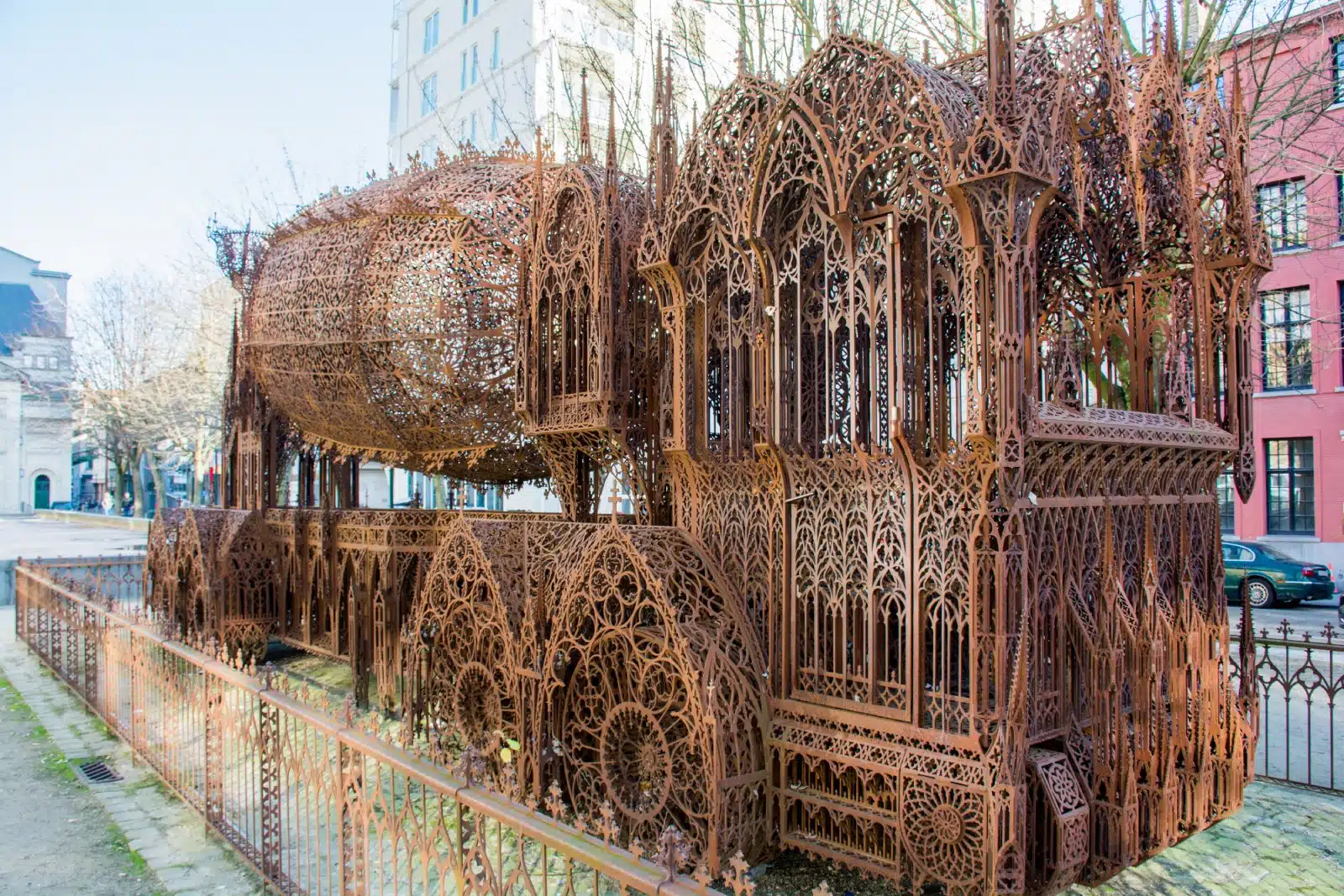
Image Credit: Shutterstock / Lorelei_Photo
Belgian artist Wim Delvoye is known for his provocative approach to art, most notably his intricately carved tires. Delvoye transforms used car tires into complex, lace-like patterns, challenging viewers to find beauty and intricacy in everyday objects typically regarded as waste. His work is a commentary on consumer culture, the throwaway society, and the potential for rebirth and transformation in the most unlikely places. Delvoye’s tire sculptures are painstakingly hand-carved, with each pattern revealing a level of craftsmanship and attention to detail that elevates the discarded material to a work of art. His creations invite viewers to reconsider their relationship with the objects they use and discard, highlighting the often-overlooked aesthetic potential in everyday waste.
Insider’s Tip
Delvoye’s work is exhibited in various art galleries and museums, including the Louvre in Paris and the Peggy Guggenheim Collection in Venice.
Website
https://wimdelvoye.be/
5. Tim Noble and Sue Webster
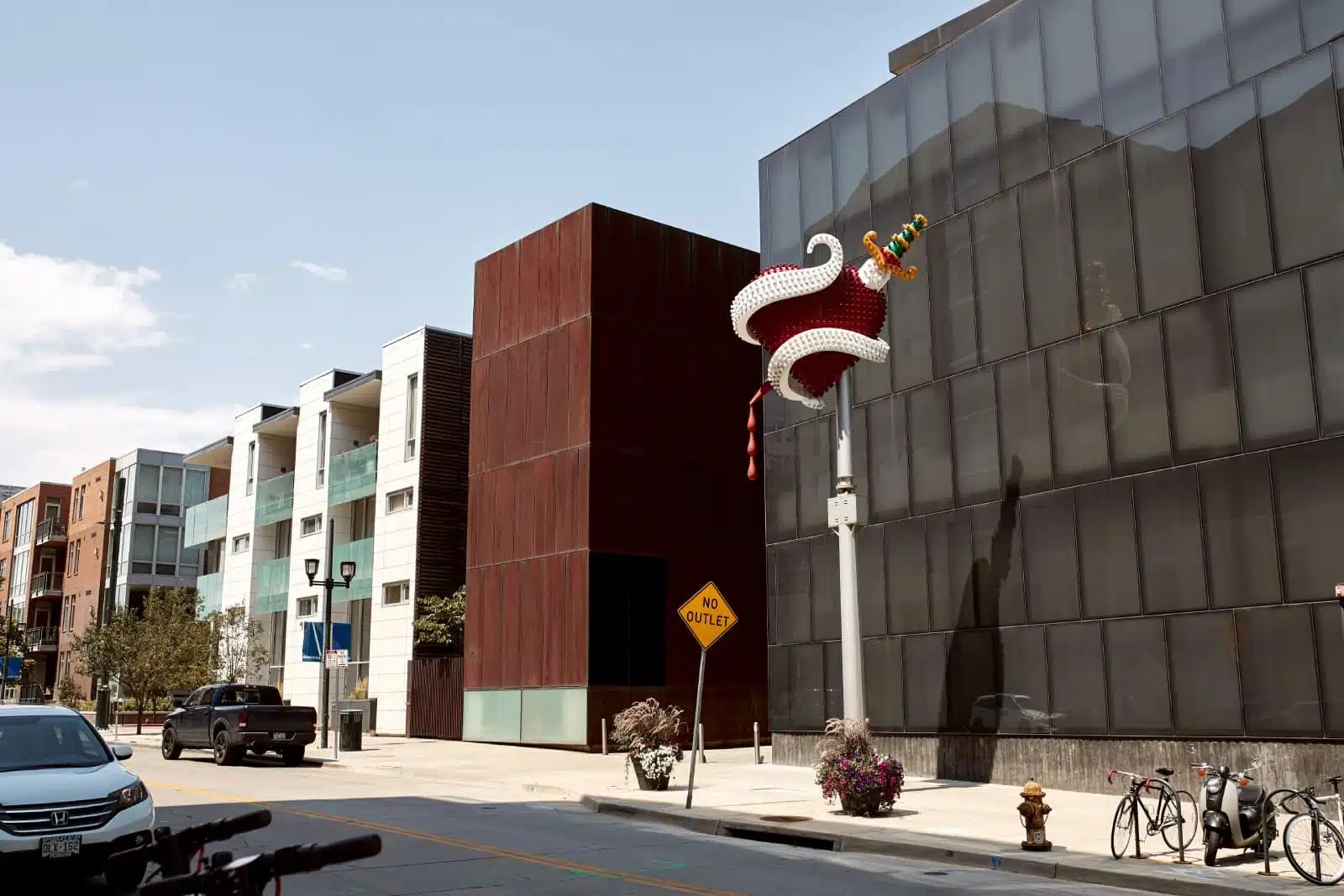
Image Credit: Shutterstock / jenlo8
British artists Tim Noble and Sue Webster have gained acclaim for their innovative shadow sculptures, created using seemingly random piles of discarded materials. Their work plays with the viewer’s perception, where what appears to be a chaotic assemblage of trash transforms into detailed and recognizable silhouettes when illuminated from a specific angle. This interplay of light and shadow, form and void, is central to their work, challenging traditional notions of sculpture and drawing. Noble and Webster’s art explores themes of identity, transformation, and the hidden beauty in the discarded. Their ability to create order and meaning from chaos provides a visual surprise. It encourages a deeper reflection on the nature of art and the materials used to create it.
Insider’s Tip
Their intriguing shadow sculptures are often displayed in major galleries worldwide, such as the Saatchi Gallery in London.
Website
http://www.timnobleandsuewebster.com/
6. Aurora Robson
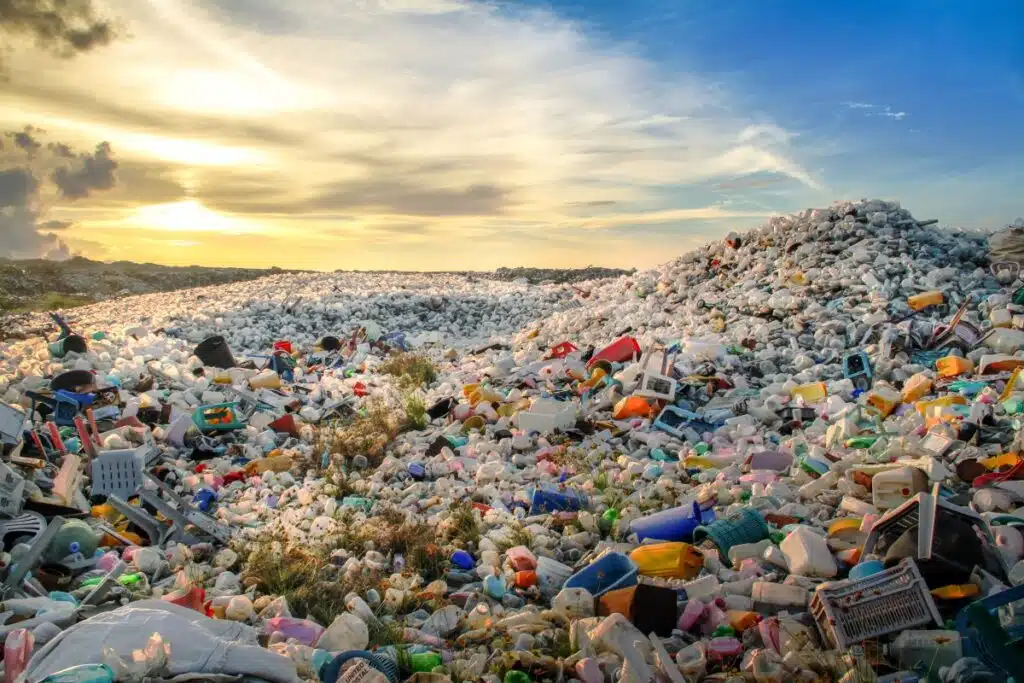
Image credit: Shutterstock / MOHAMED ABDULRAHEEM
Aurora Robson is a Canadian artist who takes a stand against plastic pollution through her vibrant sculptures and installations made from discarded plastic materials. Her work is both a visual delight and a critical commentary on environmental issues, particularly the abundance of plastic waste in our oceans. Robson’s sculptures are characterized by their bright colors and fluid forms, often resembling natural elements like plants or water currents. This transformation of plastic debris into art not only recycles waste but also raises awareness about the impact of plastic on the environment. Her work encourages viewers to reconsider their own consumption habits and the lifecycle of plastic products.
Insider’s Tip
Robson’s work can be seen in various public art installations and exhibitions across North America.
Website
7. Thomas Dambo
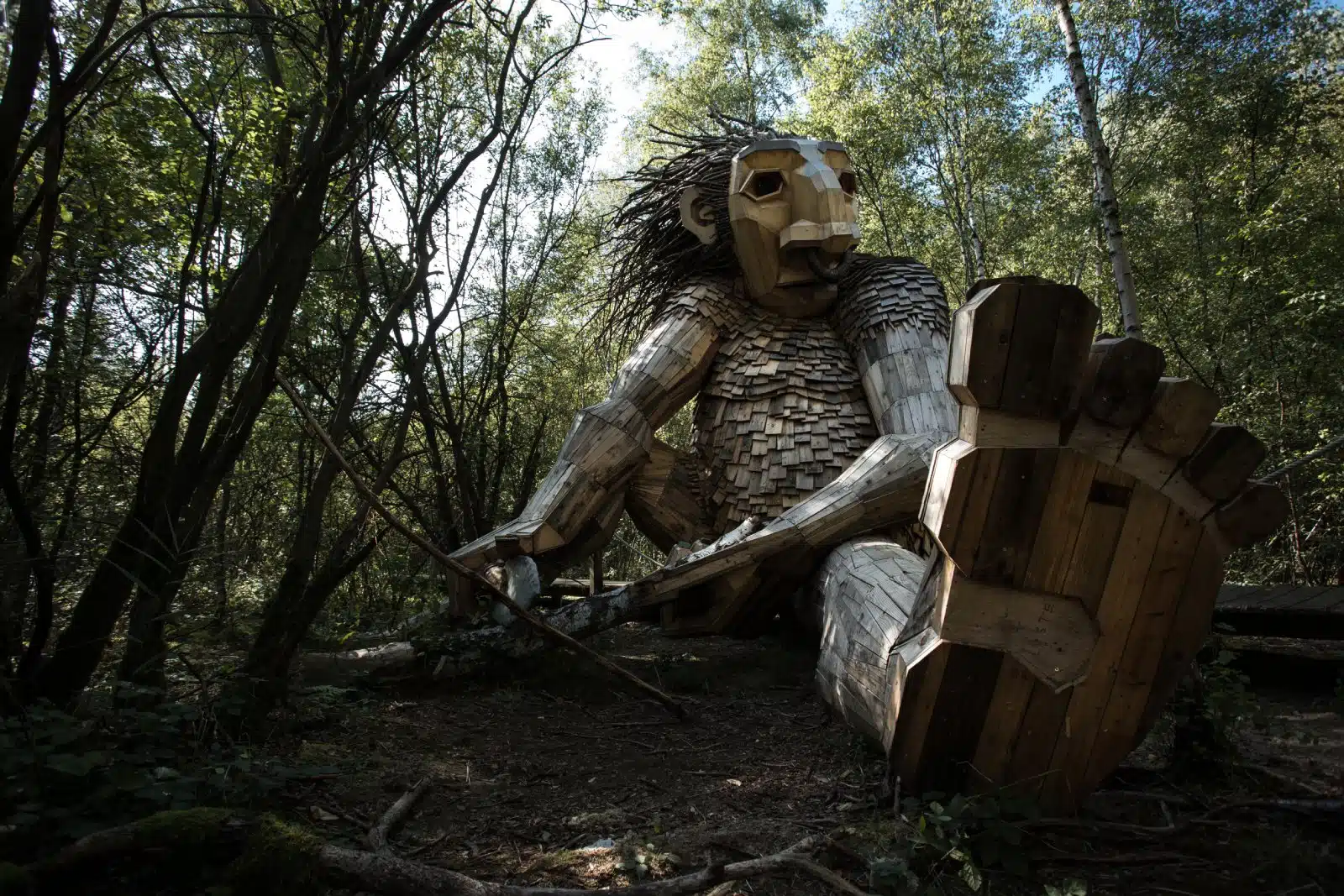
Image Credit: Shutterstock / jordan slbb
Danish artist Thomas Dambo is celebrated for his large-scale sculptures made primarily from scrap wood and recycled materials. His works often take the form of whimsical, giant figures that are placed in natural landscapes, inviting interaction and exploration. Dambo’s artistic installations are part of a broader narrative about sustainability and the creative reuse of materials. Each sculpture is constructed with the help of local communities, fostering a sense of collective responsibility and engagement with environmental issues. Dambo’s art is a playful yet poignant reminder of the potential for upcycling and the importance of caring for our environment.
Insider’s Tip
Dambo’s sculptures are located in natural and urban settings worldwide, with a concentration in Scandinavia.
Website
https://thomasdambo.com/
8. Sayaka Ganz
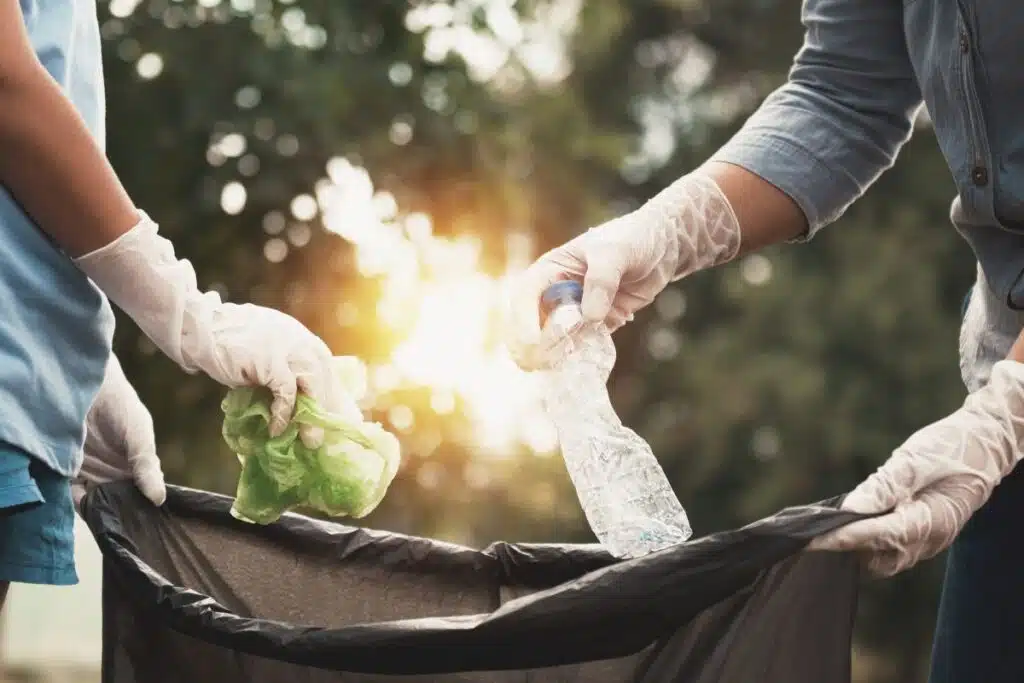
Image credit: Shutterstock / lovelyday12
Japanese artist Sayaka Ganz creates dynamic sculptures of animals using a variety of discarded plastic objects. Her work is characterized by a sense of motion and vitality, challenging viewers to see the potential for beauty and life in what is typically considered waste. Ganz’s sculptures, often made from items like plastic utensils, toys, and containers, are a colorful and imaginative exploration of form and material. Her art recycles waste and highlights the issue of plastic pollution, encouraging a more thoughtful and sustainable approach to consumption and waste management.
Insider’s Tip
Ganz’s work is displayed in exhibitions globally, with a significant presence in the United States and Japan.
Website
9. Yuken Teruya
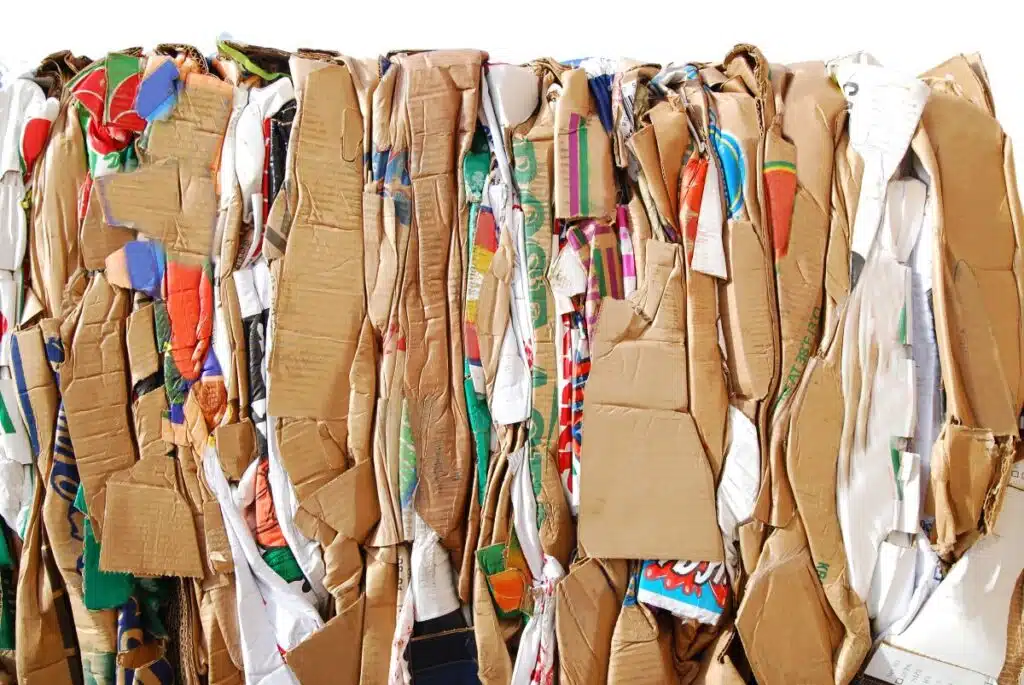
Image credit: Shutterstock / Quang Ho
Yuken Teruya, an artist from Okinawa, Japan, is known for his intricate and delicate paper cuttings made from recycled materials such as toilet paper rolls and shopping bags. His work often reflects themes of nature, consumerism, and cultural identity, offering a subtle yet powerful commentary on these issues. Teruya’s art is a meticulous cutting and folding process, transforming everyday objects into intricate, three-dimensional scenes. His pieces, often featuring elements from nature like trees and animals, are a testament to the artist’s skill and creativity and his commitment to sustainability and the reuse of materials.
Insider’s Tip
Teruya’s delicate and detailed works are exhibited in galleries and museums worldwide, including the MoMA in New York.
Website
https://www.yukenteruyastudio.com/
10. Jane Perkins
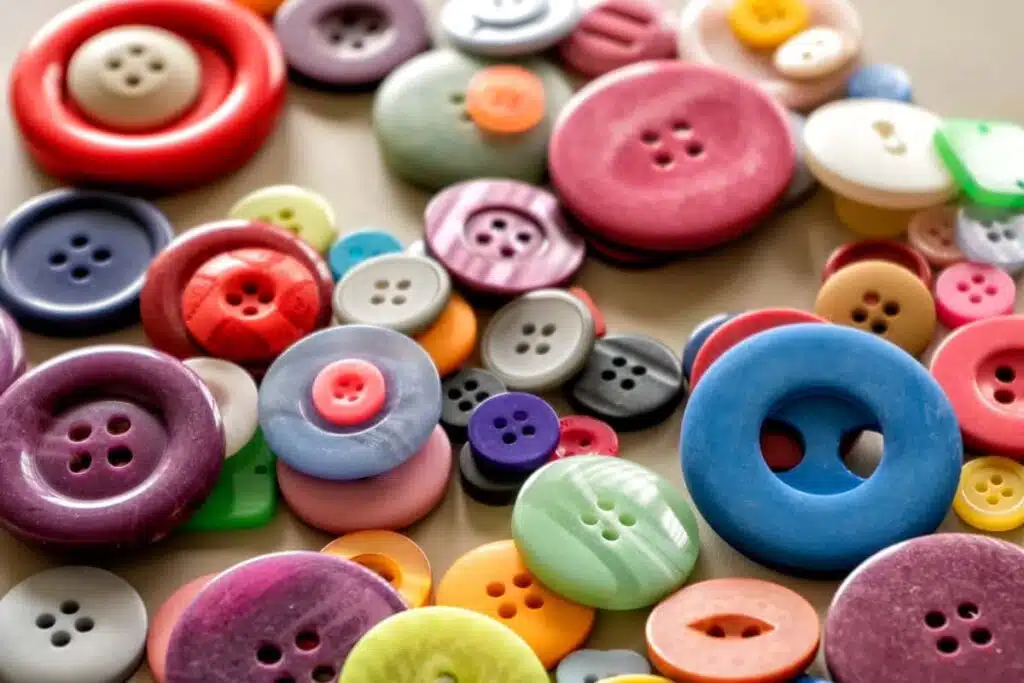
Image credit: Shutterstock / Mr.Emre.B
British artist Jane Perkins uses found objects like buttons, toys, and shells to recreate famous artworks and portraits. Her vibrant mosaics offer a fresh and whimsical perspective on familiar images. Perkins’ work is a celebration of color and texture, with each piece composed of a myriad of different objects, each contributing to the overall image. Her approach to art is about recycling materials and seeing the potential for beauty and creativity in the every day and the overlooked. Perkins’ mosaics challenge viewers to look closer and discover the unexpected details within her work.
Insider’s Tip
Perkins’ work is often featured in UK galleries and international art fairs.
Website
The Bottom Line
These artists are not just creating art; they are advocates for environmental sustainability, challenging us to see the potential in what we discard. Their work inspires a deeper reflection on our consumption habits and the impact on our planet. As you explore the world of eco-art, remember that each piece tells a story far beyond its aesthetic appeal – it’s a call to action, a reminder of our responsibility to the environment.
When exploring eco-art, take the time to learn about the materials used and the message behind each piece. This understanding will deepen your appreciation of the art and its significance in today’s world.
More From The Green Voyage
Top 10 Trending Travel Destinations 2024
6 Essential Banking Apps for International Travel – Managing Your Finances on the Go
Traveling With Kids – 10 Tips to Create Memorable Family Holidays
The post Top 10 Artists Transforming Recycled Materials 2024 – Pioneers of Eco-Art first appeared on The Green Voyage.
Featured Image Credit: Shutterstock / Denis Kudlay .
For transparency, this content was partly developed with AI assistance and carefully curated by an experienced editor to be informative and ensure accuracy.
Tips for Trip Success
Book Your Flight
Find an inexpensive flight by using Kayak, a favorite of ours because it regularly returns less expensive flight options from a variety of airlines.
Book Your Hotel or Special Accommodation
We are big fans of Booking.com. We like their review system and photos. If we want to see more reviews and additional booking options, we go to Expedia.
You Need Travel Insurance!
Good travel insurance means having total peace of mind. Travel insurance protects you when your medical insurance often will not and better than what you get from your credit card. It will provide comprehensive coverage should you need medical treatment or return to the United States, compensation for trip interruption, baggage loss, and other situations.Find the Perfect Insurance Plan for Your Trip
